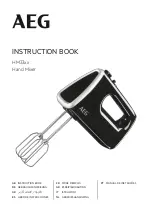
ruby standard configuration User Manual
Version: 6.4.0/2
143/179
9. The Web UI
Ø
Defining Jitter in the SDP Information
If the parameters "lawo-delay" and "lawo-jitter" are contained in a stream's SDP information, then Power Core
measures only the Path Delay and not the Jitter. This allows you to keep the Time Offset Addition values low
(for the Jitter Classes), while still connecting computer-based stream sources (such as R3LAY).
Start by measuring the jitter on the sending device (using a third-party tool), and enter the following parameters
into the stream's SDP information:
a = lawo-delay: 2080
a = lawo-jitter: 4160
The SDP parameters must be defined in microseconds. The screenshot below shows an example.
SDP Information (with "lawo-delay" and "lawo-jitter")
In R3LAY the values ?
?
can be configured via the ini file:
[DEBUG]
StreamLawoDelayMicrosecs = 2080
StreamLawoJitterMicrosecs = 4160
If Power Core receives a stream containing this SDP information, then only the Path Delay is measured and
the Jitter Class is set to 0. This results in a single Time Offset Addition (for the Path Delay Class). In this
instance, the Jitter Reserve is calculated as follows:
Jitter Reserve
=
lawo-delay
(from SDP) +
lawo-jitter
(from SDP) +
Time Offset Addition
(for Path Delay
Class)
The Time Offset is then calculated in the usual manner:
Time Offset
=
Samples per Frame
(packet size) +
Path Delay
+
Jitter Reserve
Streams that have been tuned using the new parameters are marked with a Jitter Class of 0 in the Stream
Destinations List:
Web UI (RAVENNA -> Stream Destinations List)
















































